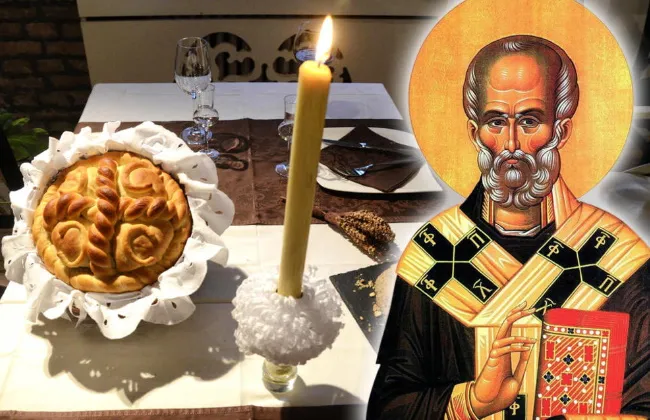Contents
ToggleIn short
In Serbia, when the harvests have come in and the vines have been harvested, and autumn and winter are here, the time for slava comes. This religious festival which pays homage to the patron saint of the family is essentially a convivial celebration.

Slava, the feast of the patron saint of the family
The opinion prevails today that it is a survival of paganism Slavic when each family had its patron deity. Like many other customs, it was integrated and reinterpreted by the Serbian Orthodox Church, which revisited its folklore and origins. It was codified in the 13th century by Saint Sava, the founder of the Serbian Autocephalous Orthodox Church.
Nearly half of Serbian families celebrate Saint Nicholas on December 19, the most celebrated being the two Saint George (Djurdjevdan on May 6 and Djurdjic on November 16), followed by the feast of the Archangel St Michael (November 21), those of Saint John (January 20), Saint Dimitri on November 8, and Saint Parascheva on October 27.
To celebrate slava, three ingredients are absolutely necessary: an icon of the patron saint of the family, a slava cake (slavski kolac) decorated with a cross and zito (wheat ground and mixed with sugar and chopped nuts), to which must be added wine and a candle. The most religious bring the priest who blesses the cake (symbol of the body of Christ) and pours a little wine on it (symbol of the blood of Christ). This is when we break the cake as a sign of cohesion. Other families bring the cake
The celebration lasts more than one day. The cake, a kind of round brioche, the zito, and the festive meal must be prepared, which will be with or without meat depending on whether the date of the celebration falls during Lent. The traditional dishes – gibanica (cheese puff pastry), ajvar (crushed peppers and chilies), kajmak (whipped milk cream), and sarma (stuffed cabbage leaves with or without meat) – are served to the guests who file past all day. Since many Slavic celebrations take place on the same day, it is rare for guests to stay more than an hour in each family.
It was included in 2014 by UNESCO on the representative list of the intangible heritage of humanity.
Social networks
Today, Serbs celebrate slava. This celebration of the patron saints of the family dates back to the mythological times of Serbia. Zito, Slavski Kolac and other traditional dishes are honored during the family meal. #mythology #myth #legend #calendar #December 19 #Serbia #slava #zito
Picture
